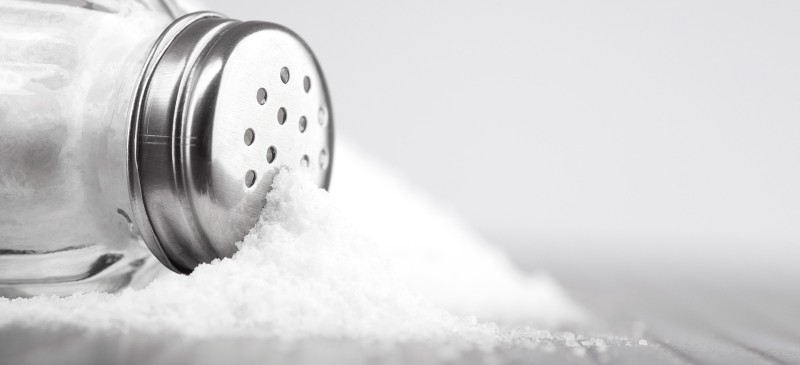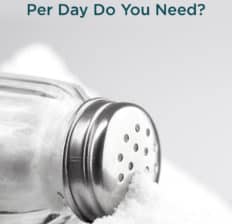This Dr. Axe content is medically reviewed or fact checked to ensure factually accurate information.
With strict editorial sourcing guidelines, we only link to academic research institutions, reputable media sites and, when research is available, medically peer-reviewed studies. Note that the numbers in parentheses (1, 2, etc.) are clickable links to these studies.
The information in our articles is NOT intended to replace a one-on-one relationship with a qualified health care professional and is not intended as medical advice.
This article is based on scientific evidence, written by experts and fact checked by our trained editorial staff. Note that the numbers in parentheses (1, 2, etc.) are clickable links to medically peer-reviewed studies.
Our team includes licensed nutritionists and dietitians, certified health education specialists, as well as certified strength and conditioning specialists, personal trainers and corrective exercise specialists. Our team aims to be not only thorough with its research, but also objective and unbiased.
The information in our articles is NOT intended to replace a one-on-one relationship with a qualified health care professional and is not intended as medical advice.
How Much Sodium Per Day Do You Need?
June 2, 2024

How much sodium per day do you need? It turns out, it’s often a lot less than most people consume.
Many countries around the world have adopted “sodium reduction strategies” to help reduce the amount of sodium that their populations consume on average, though many are not on track to reach those goals anytime soon. One strategy to help do this and get some countries back on the right path is by setting limits on the amount of salt and sodium that can be added to popular processed foods and drinks.
In October 2021, the U.S. Food and Drug Administration (FDA) and Center for Food Safety and Applied Nutrition released guidance on “voluntary short-term goals” for sodium content in commercially processed, packaged and prepared foods made in the U.S. The goal of these new guidelines is to reduce excess sodium intake among both children and adults, since studies show that most Americans consume far too much.
What’s the danger in consuming too much sodium? Even though it’s a mineral that we need in small amounts to maintain certain bodily functions, a high-sodium diet can contribute to problems like high blood pressure, kidney dysfunction and bone loss.
How much sodium per day do you need? Read on to find out.
What Is Sodium? Why Do We Need It?
Sodium is commonly referred to as “salt.” Many studies show that it’s widely present in the American diet, most often in the form of sodium chloride, which is added to a variety of packaged, canned, bottled and frozen foods and beverages.
Even though most people get too much of it, sodium is an important electrolyte mineral that is involved in muscle contraction and the regulation of blood pressure, blood volume and nerve function. So much much sodium per day is needed?
Sodium recommendations can differ based on a variety of factors. Competitive athletes, for example, should be mindful of their sodium intake and be sure to replenish any electrolytes that are lost through sweat when working out.
According to the FDA, more than 70 percent of total sodium intake among Americans is from sodium added during food manufacturing and commercial food preparation. Only 30 percent or less of salt intake is from added table salt or small amounts of salt naturally found in some foods (like meat, dairy products and eggs).
When experts refer to “commercially processed and packaged foods,” they are talking about foods to which sodium has been added, not foods that naturally contain some sodium, such as milk. Processed foods that are high in sodium are often multiple-ingredient foods that have been packaged for direct sale to consumers or use in food establishments like restaurants.
Sodium is added to packaged and processed foods not only because it enhances the taste, but because it plays a role in food safety and preservation. For example, salt/sodium can help improve microbial safety and stability of foods, extending shelf life and limiting the chances of foodborne illness outbreaks.
How Much Sodium Per Day?
Average sodium intake in the U.S. is estimated to be approximately 3,400 milligrams per day. This is considerably more than the amount recommended by the Dietary Guidelines for Americans.
How much sodium per day should you have? Most authorities advise people 14 years and older to limit their consumption to 2,300 mg/day.
In the U.S., “normal sodium levels” that can be supportive of general health are between 1,500 and 2,300 mg/day. A recommendation of no more than 2,300 mg/day has been based on a large body of research that indicates that higher than this amount may increase the risk for certain health conditions, especially high blood pressure (also called hypertension).
FDA’s 2021 Guidelines:
The FDA stated that its 2021 sodium reduction recommendations have the goal of “encouraging gradual, efficient reduction of overall sodium content.” The organization believes this is possible to do without disrupting the taste or shelf life of popular products, such as cheeses, condiments and soups.
The main concern with high sodium intake in the U.S. is that it increases the risk for cardiovascular health problems.
It’s been found that sodium consumption in the U.S. comes from a relatively small number of products that are produced by a limited number of food manufacturers. Therefore, the FDA believes that the best way to go about lowering the country’s salt intake is to have these manufacturers gradually reduce how much is used during the manufacturing process.
Experts have pointed out that people’s taste buds can adapt to lower salt intake over time, so less salt in foods shouldn’t be a problem from a taste standpoint.
This updated FDA guidance aims to help Americans reduce their average sodium intake to 3,000 mg/day. Experts believe that by encouraging food manufacturers, restaurants and food service operations to gradually reduce sodium in foods over time it will help people consume less salt/sodium without even really being aware of it.
The 3,000 mg of sodium per day recommendation is still higher than the ideal sodium limit of 2,300 mg/day. However, the idea is that this is a step in the right direction and that’s it’s a realistic goal to hit.
At this time, the FDA guidance is intended to be viewed only as a recommendation, unless specific regulatory or statutory requirements change. For now, the guidance is suggested and encouraged for food manufacturers to follow but not required by law.
How much sodium should you have a day on a low-sodium diet?
People with high blood pressure (or hypertension) are sometimes put on a low-sodium diet by their doctors to improve their conditions and prevent complications.
How much sodium is OK for high blood pressure? For example, is 1,000 mg of sodium a lot? Is 200 mg of sodium a lot?
The American Heart Association recommends no more than 2,300 mg a day for mostly healthy adults. It’s even less, ideally no more than 1,500 mg per day, for adults with hypertension or heart disease.
This is based on the fact that your body only needs about 500 milligrams of sodium per day to function properly, which translates to less than a quarter teaspoon of added salt.
Between 1,000 and 1,500 mg/day is generally low, but it’s possible as long as you monitor what you eat.
Sticking to less than 200 to 500 mg of sodium per day is very low and often difficult to do. This would require eating nearly zero processed foods and a strict diet consisting of only homemade and mostly raw plant foods — plus such low amounts may contribute to some side effects, such as dizziness, weakness and brain fog.
Too Much Salt vs. Low Sodium
Consuming too much salt/sodium is a much more common problem than not consuming enough. For example, the average sodium intake for Americans is about 3,400 milligrams daily, nearly seven times the minimum amount that the human body needs!
When your diet is high is salt (in other words, you have “excess sodium consumption”), you’re more at risk for:
- Hypertension, which is a leading cause of heart disease and stroke.
- An increase in excretion of calcium through the urine, which results in bone loss and higher risk for osteopenia or osteoporosis.
- Kidney disease due to damage of the small, delicate blood vessels in the kidneys.
- Diabetes, as new research from the Mayo Clinic unearthed.
Decreasing population sodium intake is expected to reduce rates of hypertension. Research also shows that the increase in blood pressure seen with aging, common to most Western countries, is not observed in populations that consume low-sodium diets.
Consuming less sodium may be able to help lower your blood pressure if this is a condition you’re dealing with. This approach has been demonstrated in many studies investigating the effects of the MIND Diet and DASH Diet (which stands for dietary approaches to stop hypertension).
Researchers estimate that reductions in average sodium intake to a level of roughly 2,200 mg/day would result in tens of thousands fewer cases of heart disease and stroke each year, as well as billions of dollars in health care savings over time.
How to Eat a Lower-Sodium Diet:
Now that you know the potential dangers associated with high salt consumption, let’s look at how you can keep your intake in check.
You can determine how much sodium a food contains by reading the nutrition facts label. A food is likely to be high or relatively high in sodium if the ingredient label includes words like “sodium,” “salt” and “soda” within the first few ingredients.
As a general rule of thumb, processed foods that have been smoked, cured, salted or canned are generally foods high in sodium and should be limited.
Foods high in sodium to avoid or limit include:
- Breads and rolls
- Pizza
- Sandwiches
- Condiments, like mustard, relish, mayonnaise
- Cold cuts, hot dogs, salami and other cured meats
- Soups
- Burritos and tacos
- Pre-made entrees and frozen dinners
- Savory snacks, such as chips, popcorn, pretzels, snack mixes and crackers
- Cheeses
- Tomato sauces
- Packaged vegetables
- Some bottled juices
- Soy sauce
- Salad dressings
- Boxed dessert mixes
- Buttermilk and some salted butters
Foods that are naturally lower in salt/sodium include:
- Fresh fruits
- Fresh vegetables
- Whole grains
- Dried and then prepared legumes and beans (or rinsed well if canned)
- Nuts and seeds that aren’t roasted and smoked
- Lean animal protein and fish
- Salt substitutes that can be used in place of regular table salt to boost flavor of foods, such as garlic, onion, herbs, spices, lemon juice and vinegars
Conclusion
- How much sodium per day do you need? For most adults in the U.S., it’s lower than what they consume.
- More than 70 percent of Americans’ sodium intake comes from foods where sodium is added during food manufacturing and commercial food preparation. This is why the FDA is recommending manufacturers reduce sodium content in popular foods.
- Average sodium intake in the U.S. over 3,400 mg/day, which can contribute to hypertension, cardiovascular and kidney disease, and bone loss.
- How much sodium per day should you have? Recommended daily sodium intakes depend on factors like your age, activity level and how generally healthy are (including your blood pressure).
- For most people, it’s recommended to stay below 2,400 milligrams of sodium per day. Ideally, however, sodium intake should actually be lower than 1,500 milligrams.
- Foods high in sodium include processed meats, canned foods, salty snacks, and frozen or convenience items. Whole, fresh foods like veggies, fruits, fish and grains, on the other hand, are naturally low-sodium foods.




